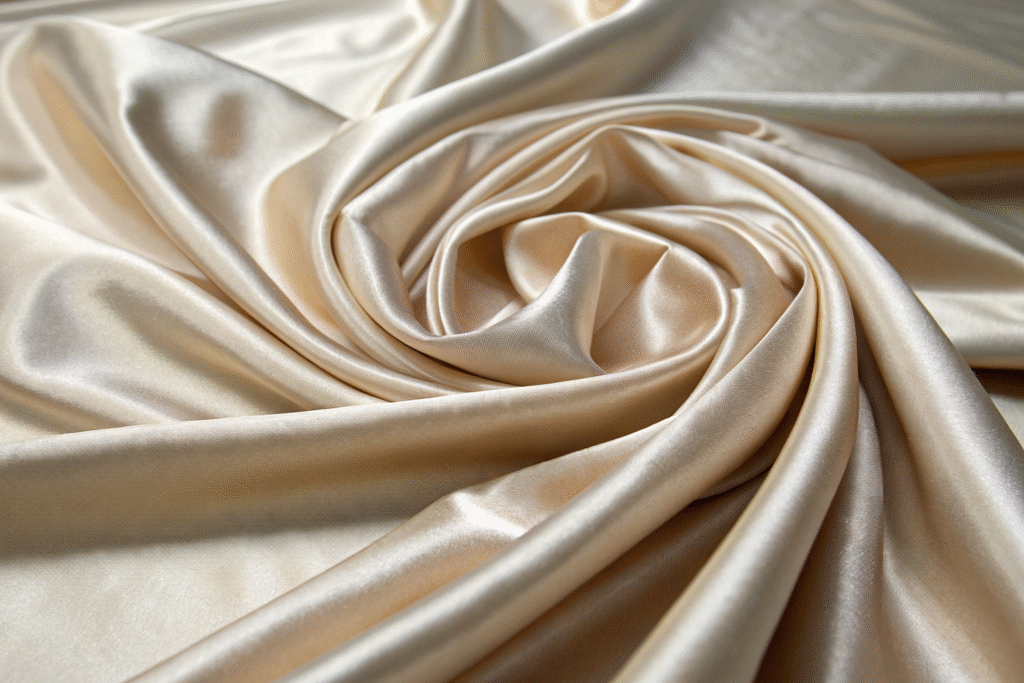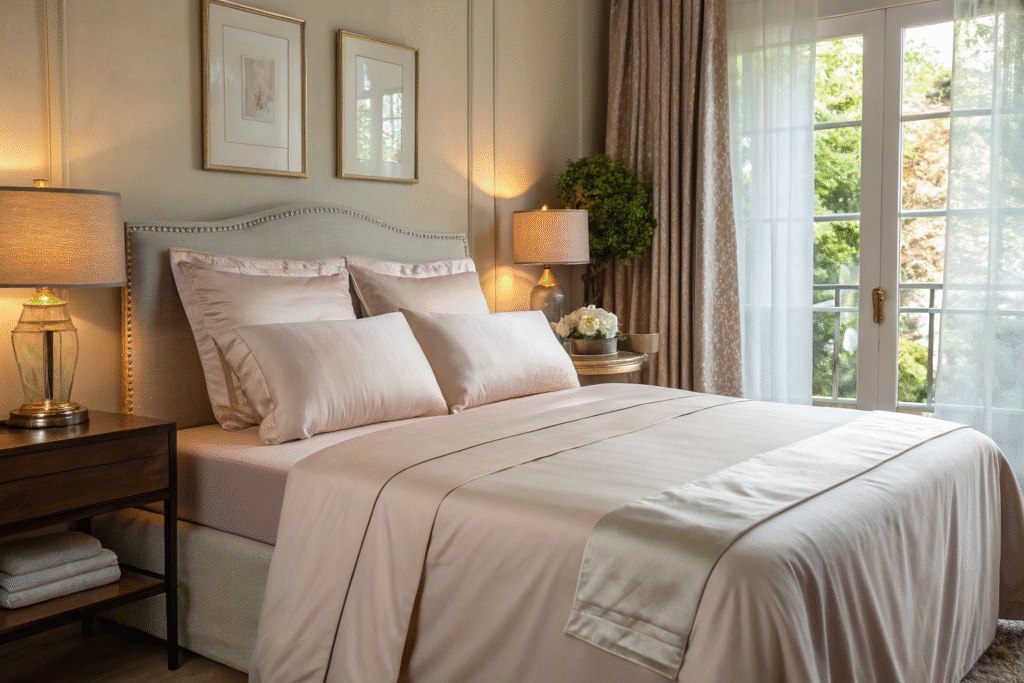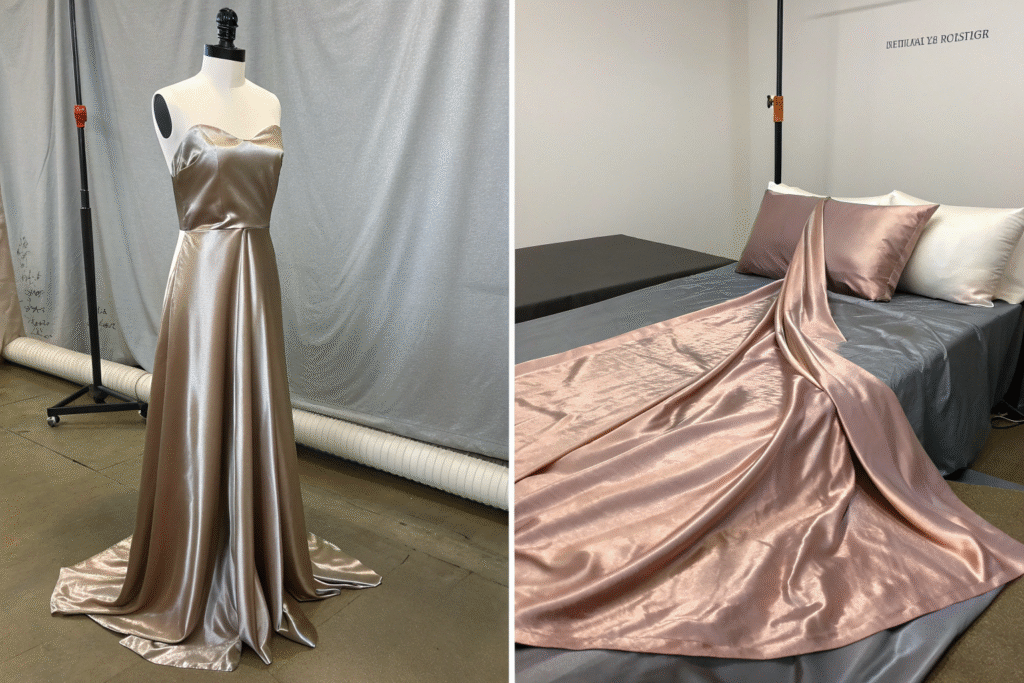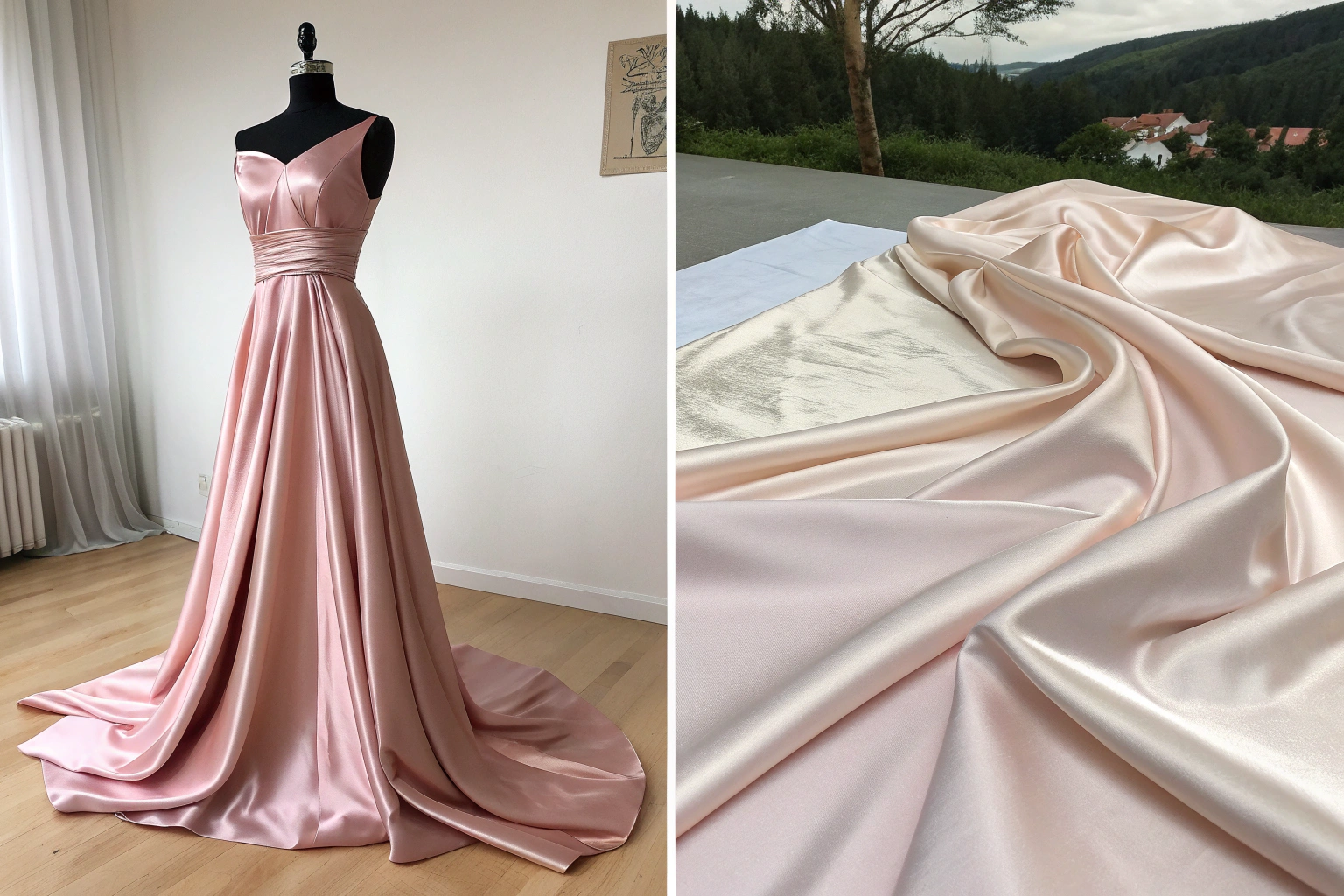When international buyers research fabrics, one of the most common confusions they face is whether satin and sateen are the same fabric. The names sound almost identical, but in the textile industry they carry very different qualities and applications. Knowing these distinctions will help brands, designers, and importers make informed decisions that directly impact product performance and market appeal.
Satin is a weave structure traditionally crafted with silk or synthetic filaments, resulting in a glossy, luxurious surface. Sateen, on the other hand, uses cotton yarns in the same weaving technique, producing a softer, more practical fabric suited for bedding and everyday apparel.
By the end of this article, you will clearly understand not only the structural differences but also the commercial value each fabric offers, so you can better decide which to use for your collection.
Satin Fabric Benefits
Satin has been regarded as the ultimate fabric of elegance for centuries. It is still used today in high-end fashion, bridal wear, and luxury accessories because of its unmatched shine and drape.
Satin is not defined by fiber, but by its weave. In the satin weave, long warp yarns float over weft yarns, creating fewer interlacings. This structure allows light to reflect seamlessly, which explains the surface gloss. Traditionally, satin was made from silk, but in modern production, it is often woven with polyester or nylon to balance cost and durability.

Why does satin have such a strong sheen?
Because the yarn floats are long, light is reflected more directly, creating the signature glossy finish. This effect is why satin is often used in stage costumes and formal wear where appearance under lighting is critical.
Where is satin commonly applied?
Satin is popular in evening gowns, ribbons, lingerie, luxury linings, and upholstery. It provides a flowing drape that makes garments appear sophisticated and glamorous.
Sateen Fabric Benefits
Sateen shares structural similarity with satin but delivers a different tactile experience. It is produced with cotton yarns instead of silk or synthetic filaments, making it warmer, softer, and easier to maintain.
Sateen’s surface has a subtle glow, but not as reflective as satin. The cotton is usually mercerized, which strengthens fibers and enhances luster while preserving natural breathability. This makes sateen highly valued in the home textile sector.

Why is sateen preferred for bedding?
Cotton sateen sheets are smooth against the skin, breathable, and machine-washable. They combine luxury with practicality, which is why premium bedding lines often market sateen as an upgrade over plain cotton.
Where else is sateen used?
Apart from bedding, sateen is common in pillowcases, lightweight jackets, linings, and casual dresses. Its soft hand feel makes it versatile for everyday comfort. Luxury sheet sets like Egyptian cotton sateen remain a top choice among U.S. and European consumers.
Satin vs Sateen Comparison
While satin and sateen share the same weave family, they are not interchangeable. Their fiber content creates unique qualities.
| Feature | Satin | Sateen |
|---|---|---|
| Fiber type | Silk, polyester, nylon, acetate | Cotton (sometimes blended) |
| Sheen | High-gloss, very reflective | Muted luster, soft glow |
| Touch | Cool, slippery, fluid | Warm, smooth, cozy |
| Applications | Bridal gowns, lingerie, upholstery | Bedding, pillowcases, casual wear |
| Care | Dry-clean or delicate wash | Machine washable, everyday friendly |

Which fabric lasts longer?
Synthetic satin fabrics such as polyester satin resist wear and stretching, making them suitable for long-term use in garments. Cotton sateen can pill or snag, but high-quality sateen maintains durability when properly cared for.
Which is more luxurious?
For high-fashion purposes and luxury statements, satin is unmatched. But when comfort and daily usability matter, sateen becomes the logical choice.
How to Choose for Your Business?
The right choice depends on your market, price points, and customer expectations.

Do you need fabric with luxury appeal?
Choose satin. It’s the standard for bridal wear, red-carpet dresses, and premium accessories. For instance, wedding gowns in satin stand out because of their fluid drape and reflective finish.
Do you prioritize comfort and practicality?
Select sateen. It works best for bedding, home textiles, and apparel where comfort is key. Customers seeking affordable luxury often turn to sateen sheets, which offer softness and sheen at a fraction of silk’s cost.
Conclusion
Satin and sateen come from the same weaving family but deliver different experiences—satin elevates glamour and elegance, while sateen provides comfort and practicality. Knowing their differences helps global buyers like you avoid costly mistakes and choose fabrics aligned with your market.
At Fumao Fabric, we manufacture and export both satin and sateen fabrics along with a complete portfolio of woven, knitted, and functional textiles. With our strong supply chain, certified quality assurance, and flexible production, we help global brands bring their designs to life. To discuss your next collection or custom orders, please contact our Business Director Elaine at elaine@fumaoclothing.com.










